By R. E. Diaz
His particle physics class at the Autonomous University of Madrid summarily interrupted, Father Felipe Bernal found himself chauffeured to the airport, paging through the supporting documents of a proposal that became more far-fetched the deeper he dug into the pile. “Someone’s claiming a breakthrough in Extremely Low Frequency electromagnetic communication?”
Chief Air Marshall James Garrett of the Royal Australian Air Force, sitting across from him, nodded in the affirmative.
“I don’t see how a technological leap is possible here, James. This is one of those cases where the laws of physics and mathematics set an inviolable limit.”
“That’s what my aide said,” Garrett nodded at the driver.
The young man replied with a two-finger salute in the rearview mirror and then spoke over his shoulder, “Niko Psaras, Sir; Aristotle University of Thessaloniki.”
On the chartered flight, Father Bernal rendered his verdict. “This is nonsense. Information Theory is pure mathematics: As long as two plus two equals four, the results will never change. With frequencies below 100 Hz being the only EM waves that can penetrate deep into the ocean, and the ambient temperature down there at 4C, the only viable communication rate from an enormous land mass antenna on the surface to a submarine at maximum depth is of the order of three words a minute… and receive-only at that. Stay below that rate, and error correcting codes can pull the signal out of the noise. Try a higher rate, and any error grows exponentially.”
“But what about the noise floor?” Garrett asked. “Couldn’t you get around it with cryogenics?”
“Well, you could improve the receiver electronics.” Father Bernal admitted. “But the antenna temperature term that goes into the equation involves integration over all surrounding sources, four pi steradians… You can’t cool down the whole ocean.”
“What if you had access to negative temperatures?” Niko Psaras asked.
Father Bernal gave Garrett and the young officer an incredulous look.
“We have seen it work.” At Garrett’s nod, the aide pulled a tablet from his coat pocket and played a video, date-stamped three months earlier. It showed the bridge of a submarine with several officers gathered around the comm station, and the radio operator carrying a two-way conversation for several minutes through a headset connected to a metal sphere that was in turn connected to the submarine’s sensor array. “When we returned to base,” the Air Marshall said as he handed the tablet back, “their transcript of the conversation from the land side was identical.”
“Any country with this technology,” the aide added, “would have real time communication access to deeply submerged, absolutely undetectable assets.”
“That demonstration was enough to guarantee full funding.” Garrett finished.
“It has to be a hoax.” The priest insisted.
“I was hoping you would say that.” Garrett affirmed as the plane landed in Venice. He went on in the limousine. “They won’t listen to me. I am just here as part of the Australian delegation, with little to say on Navy matters. But you can put the acid on. The world still remembers it was you who figured out how to defeat the aliens.”
“Precisely, James!” Bernal’s eyes took on a severe look. “It’s been barely six years since humanity came together to fight off an alien invasion. How can we be starting an arms race again?”
“Human nature, Padre,” The Air Marshall replied dryly.
The priest dropped his forehead to his hand and stared at the documents again. “What was inside that sphere?”
“Nothing.” The aide replied.
“Absolutely nothing.” Garrett explained at the priest’s blank stare: “Yes. Supposedly it is the absolute vacuum. Devoid of everything, including dark matter.”
“That’s their theory,” the aide went on: “that dark matter is what maintains the universe’s thermal equilibrium; that it is the reservoir of the zero-point energy.”
“The negative temperature attained is said to be proportional to the volume of the vacuum they can create.” Garrett finished.
“This is sheer nonsense.” Amazement at the gullibility of the people funding the work showed clearly on Father Bernal’s face. “Look: to prove this is a hoax you would have to investigate all the parties that were involved in setting up the demonstration. Recruit a magician to help you find the weak links. Scientists and military officials are notoriously poor at debunking paranormal claims.” He shook his head. “Check your history. During last century’s cold war, both sides did active research on so-called remote viewing. They too were sure it worked.”
“You are preaching to the proverbial choir.” The Air Marshall avowed and then paused abruptly. And the look on his face spread a chill across the priest’s back.
“James, really, why do you need me?”
“Padre, we are here because, a week ago, they called for a meeting of all the interested parties. They scheduled a series of lectures to disclose all the details of the technology, in advance of firing off the prototype engine.”
“And?”
“Half an hour into the first lecture, I had already decided this was all berley. But the longer the lectures went on… well, I couldn’t shake the heebie jeebies. The guy is offering them the magic pudding, literally; and they are all buying it! He says once we have a stable negative temperature interface running, the applications are endless.”
“It goes beyond the promise of infinite bandwidth communication,” Niko put in: “Manufacturing with no need for cooling water; so, no environmental contamination; reversal of climate change; medical advances beyond our dreams…” This time he was the one that paused abruptly.
“Supposedly,” Garrett finished for him, “even death can be repaired with this technology.”
Father Bernal looked out the window as he felt the limousine slowing down. He had assumed they were going to some classified military base. Instead, he recognized the place. “Laboratori Nazionali di Legnaro.” It was unexpected; but it made sense. “The original DEMIURGOS project was set-up here. They were using cryogenics, lasers, and ultra-pure material technology to detect isolated excitation phenomena in solid matter… at and below the single eV level. It is the only viable way to detect dark matter in the laboratory.”
“And if you can detect it, you can remove it.” Chief Air Marshall Garrett concluded, ushering him out of the limousine.
The security officer at the gate did a first double take when he noticed the black cassock of the third member of that trio, and a second one as he read his clearance level.
“How are they doing it?” The priest asked as the officer waved them on.
“Here, Pater.” Niko took out his tablet again and called up a schematic showing a small, instrumented apparatus suspended above a spinning ceramic disk – a foot in diameter – caged with magnets, and all contained within a cryogenic chamber. “This cold crucible was used to build that first sphere. The senior member of the French team said he had seen something like this during his time at NASA in the late 1990s.”
“I would agree,” the priest replied. “If that is a YBCO disk, that resembles Podkletnov’s gravity shielding set-up.”
“The scaled-up set-up is much larger,” Garrett pointed to the floor as he held open the lift’s door, “thirty storeys underground.”
“Podkletnov’s method cannot be scaled up.” Father Bernal protested. “That, is about the largest size superconducting ceramic disks can be made.”
“The scaled-up version is different.” Niko continued. “No one in any of the teams has seen anything like it before. But one of the Americans said it must have to do with Li’s gravitomagnetic propulsion.” Niko finished by swiping his finger on the tablet’s face, bringing up another video with an attached schematic.
“They are creating artificial gravity?”
“Supposedly attuned to dark matter.” Niko nodded at the screen.
Father Bernal stared at an image straight out of a dozen science fiction movies: massive nested toroidal structures, rings within rings, spinning and tumbling like giant gyroscopes. There were six of them, positioned at the six faces of a central cubical chamber, 4 metres on the side, only accessible via a corner double door, and empty except for the sensor instrumentation.
Each toroid consisted of a curved metal cage supporting a thick-walled Dewar glass donut, filled with liquid helium, within which twenty smaller cupronickel tori, evenly spaced along the toroid’s internal axis, remained suspended and spinning in the frictionless superfluid; held perfectly aligned by an axial vortex. The metal cages were themselves attached by titanium shafts to massive rotary bearings; and those in turn mounted onto a cylindrical rolling track embedded into the sides of the mouth of a thirty-metre-long channel that connected each gyroscope to a giant metal sphere at the far end.
“I don’t understand what I am looking at.” The young man confessed.
“Wheels within wheels,” Bernal muttered.
As the lift started to slow down, Father Bernal looked up at the young man. “Niko, what do you know about dark matter?”
“It is everywhere… made of particles that can only interact with all other matter via gravitation; untouchable by all other forces. It supposedly makes up 85% of the total mass of the universe; it is the simplest explanation for all the gravitational anomalies that general relativity cannot explain.”
“But what is it?” Bernal insisted, as he was going through his own mental catalogue of research papers, in search of a memory that kept rekindling the chill across his spine.
“The proposed candidates range from WIMPs in standard model extensions to microscopic black holes.”
“No, no… those are too heavy.”
The lift jarred to a halt, not quite reaching the control room level. And then, the facility’s emergency evacuation klaxon started bleating.
“What the hell?”
“I pray,” Father Bernal grasped Garret’s shoulder, “that you are not right.” The pallor on the priest’s face was not what the Air Marshall had hoped for. Still, there was no hesitation in the priest’s next command. “Open that door, we need to get in there.”
Garrett and Niko managed to pry loose the inner sliding door. But all three together struggled at the central seam of the jammed hoistway door, barely budging it.
In between huffs of exertion, Father Bernal went on: “There was a paper by Clamet and Kuipers – 2021. Using quantum gravity, they argued that the mass of dark matter particles must be somewhere between 1 milli eV and 10 mega eV; a breakthrough improvement over the previous bounds of 10-24 eV to 10+19 GeV.”
“And?” Niko grunted back.
“There is something they didn’t realise. In 2014, Herrera, using Brillouin’s principle, had shown that the mass of 1 bit of information at room temperature is of the order of 17 milli eV…a quarter of a milli eV at the temperature of the microwave background of the universe…”
“Just,” Niko grunted again, “just at the edge of Clamet’s new bounds.”
“I had thought it was just a marvellous coincidence…” Bernal gasped, “until now.”
“You are saying,” Niko redoubled his effort at the door’s edge, “you are saying that dark matter could be made of quantised information?”
“Yes,” Bernal panted, gritted his teeth, and pulled again at the door, “pure information. And if so, the energy from annihilation — or for pair production — lies precisely in the spectrum of the cosmic microwave background!”
With a terrible shout, Chief Air Marshall Garrett succeeded in ramming his side of the door into the wall’s door guide, shredding the twisted metal of the deformed frame. Niko was the first one down onto the floor.
“Fiat Lux, Niko, Fiat Lux.” Father Bernal said as he slid down, holding onto the young man’s arm. “We’ve always assumed that meant visible light.”
Chief Air Marshall Garrett dashed down the empty corridor surveying the damage. “There must have been an earthquake,” he started; “everyone’s gone” – and then his eyes were drawn back to the control room by the incessant droning of the spinning machines.
“They are not gone,” Niko walked up to the glass window facing the room; “they are all dead.”
“Except them.” Father Bernal nodded at the central cubical chamber, The access doors at the corner of the cube were pinned open by the prone bodies of two security guards, straddling the entrance ramp. And within the cube were three scientists… in blood-soaked lab-coats; grinning, muttering incoherently at each other; basking in the shimmering twilight swirling at the centre of the cube.
Garrett, every hair on his body standing on end, stared at the priest. Niko, just as pale, managed to speak: “Fiat Lux… The all-pervading dark matter, that fills the universe —”
“It must be the Word of God,” Father Bernal finished for him. “The writer of the Epistle to the Hebrews said the Word holds all things together.”
“They are not evacuating those spheres at the ends,” Niko gasped.
“No, not the spheres.” Bernal replied. “This is why it says in Genesis tenebrae super faciem abyssi…” He shook his head in frustration. “It is not, the darkness covered the face of the abyss. But rather, the darkness sealed off the face of the abyss. We have known since the beginning. The apostle understood! In his letter to the Thessalonians, he said that which holds back the mystery of lawlessness will continue to do so till it be taken out of the way.”
“Abyss? Abyss! Sh —” Garrett grabbed Niko’s arm. “Come on, we need to find the building’s electrical room, shut down the power.”
“There’s no time.” Father Bernal ran to the control room door and swung it open; Garret and Niko behind him.
The Air Marshall found another dead security guard and took his gun.
“That won’t help.”
“What are you doing?”
The priest stepped onto the ramp to the central chamber. “Niko,” Bernal turned to the aide, “how much dark matter do you think that cubical room contained to begin with?”
Niko thought for a moment. “Couldn’t have been more than 25 attograms.”
Bernal advanced up the ramp. The men inside turned around, first in surprise, then with hungry glee. And the priest finally answered the Air Marshall’s question as he reached within the inside pocket of his cassock. “I am counting on Newton,” he said; and he flung his pocket Bible into the chamber.
Every wall suddenly shivered inwards and something like a muffled thunderclap shook the room. After a momentary hesitation, the machines responded by spinning faster and faster… their feedback circuits racing to increase their pull, until their drone became a deafening whine. Father Bernal leaped over the ramp’s handrail; and then, with a hideous shriek, all six toroids sheared free of their titanium pylons and slammed into the centre of the cube in one massive implosion.
Chief Air Marshall Garrett was the first to stand within the dissipating cloud of dust that drifted through the control room, staring at the compressed remains of the infernal machine.
Father Bernal, leaning on Niko’s arm, stood up and muttered between coughs, “to every action there is an equal and opposite reaction.”
Garrett looked from priest to aide uncomprehending.
“Attograms… of primordial Information…” Father Bernal said. “And all that reinforcement,” he waved at the bearing rings, the crumbled concrete walls, and the remains of the titanium pylons, “all that was there just so they could keep pumping that much out of the chamber toward the reservoirs at the ends.”
Niko’s eyebrows raised. And Father Bernal finally chuckled as his eyes met Chief Air Marshall Garrett’s eyes. “I just added about 200 more grams of that information into the chamber.”
“Compared to the ambient dark matter…” Niko started to smile broadly.
“That was equivalent to a small black hole, don’t you think?” Father Bernal finished.
![]()
About the Author
Rudy Diaz
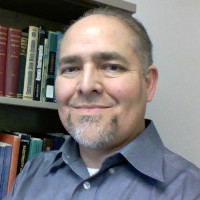 A Physicist in Engineer’s clothing, Rudy worked 20 years in the Defense Aerospace Industry, from performing Lightning Protection analysis on the Space Shuttle to the design of Radar Absorbing Materials. He then joined Academia as a Professor of Electrical Engineering, where for another 20 years he attempted to infect unsuspecting students with a love for Maxwell’s equations.
A Physicist in Engineer’s clothing, Rudy worked 20 years in the Defense Aerospace Industry, from performing Lightning Protection analysis on the Space Shuttle to the design of Radar Absorbing Materials. He then joined Academia as a Professor of Electrical Engineering, where for another 20 years he attempted to infect unsuspecting students with a love for Maxwell’s equations.
Since High School he has spent most of his free time either writing Science Fiction or trying to figure out how to make Science Fiction a reality. (His students' latest work has led to the realisation of efficient RF antennas that radiate using true magnetic (not electric) currents.)
His speculative fiction short stories have appeared in Residential Aliens, Ray Gun Revival, The Untold Podcast, and Antipodean SF. He blogs on the subjects of Science, Religion, and their intersection. The rest of his work is in the peer reviewed Physics and Engineering literature.
Rudy has also been involved in Jail Ministry for about 30 years. He and his wife Marcy live in Phoenix, Arizona.
Links: <https://rediazauthor.com/>

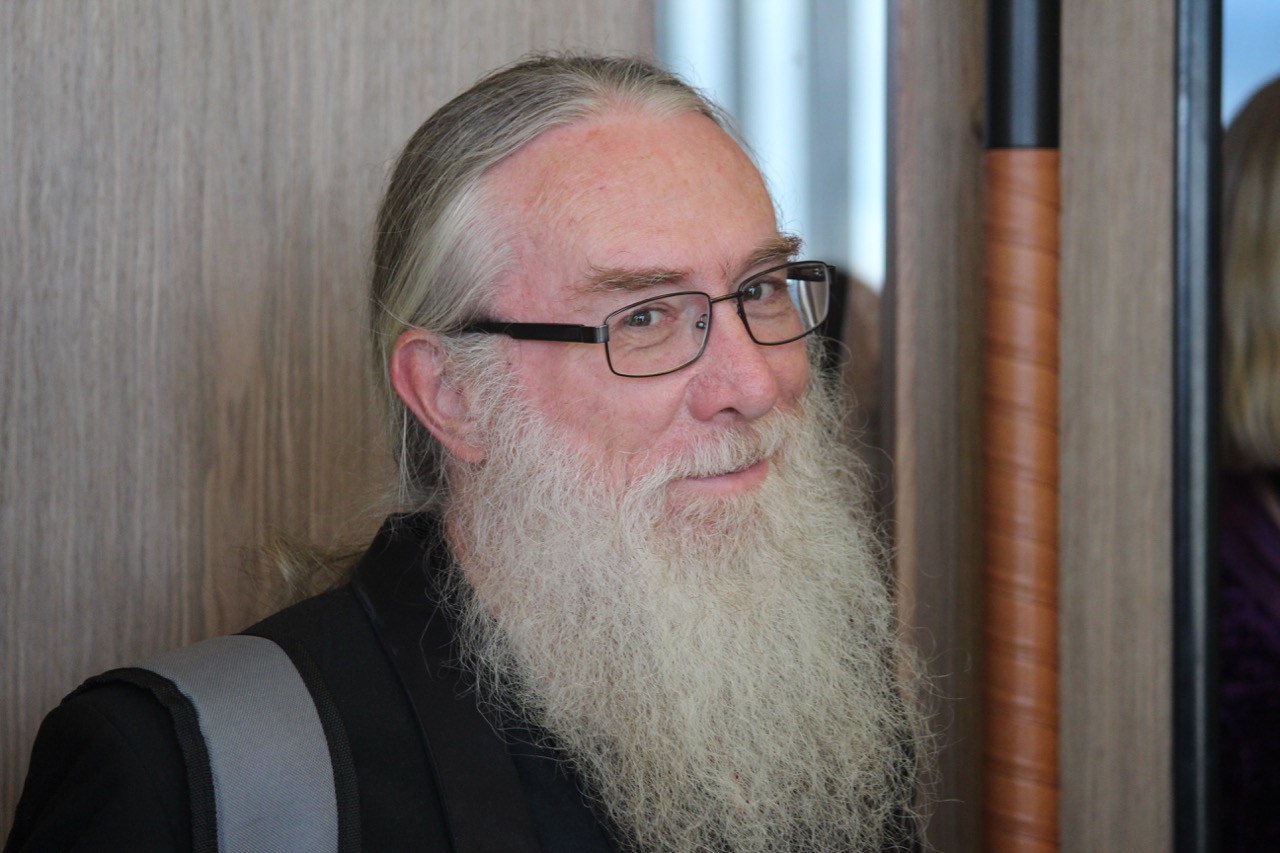

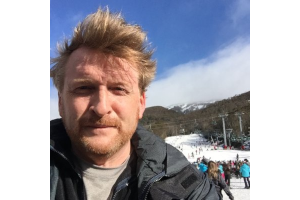











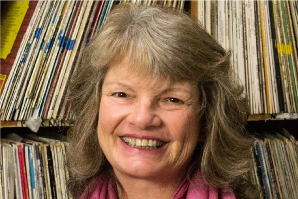 My time at Nambucca Valley Community Radio began back in 2016 after moving into the area from Sydney.
My time at Nambucca Valley Community Radio began back in 2016 after moving into the area from Sydney. Alistair Lloyd is a Melbourne based writer and narrator who has been consuming good quality science fiction and fantasy most of his life.
Alistair Lloyd is a Melbourne based writer and narrator who has been consuming good quality science fiction and fantasy most of his life.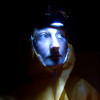
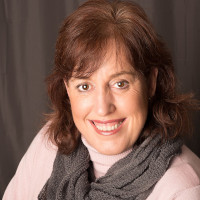 Geraldine Borella writes fiction for children, young adults and adults. Her work has been published by Deadset Press, IFWG Publishing, Wombat Books/Rhiza Edge, AHWA/Midnight Echo, Antipodean SF, Shacklebound Books, Black Ink Fiction, Paramour Ink Fiction, House of Loki and Raven & Drake
Geraldine Borella writes fiction for children, young adults and adults. Her work has been published by Deadset Press, IFWG Publishing, Wombat Books/Rhiza Edge, AHWA/Midnight Echo, Antipodean SF, Shacklebound Books, Black Ink Fiction, Paramour Ink Fiction, House of Loki and Raven & Drake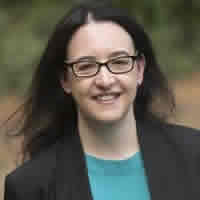
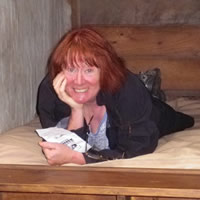 Margaret lives the good life on a small piece of rural New South Wales Australia, with an amazing man, a couple of pets, and several rambunctious wombats.
Margaret lives the good life on a small piece of rural New South Wales Australia, with an amazing man, a couple of pets, and several rambunctious wombats.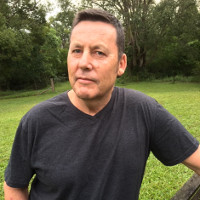 Tim Borella is an Australian author, mainly of short speculative fiction published in anthologies, online and in podcasts.
Tim Borella is an Australian author, mainly of short speculative fiction published in anthologies, online and in podcasts.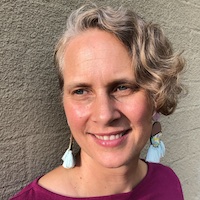 Merri Andrew writes poetry and short fiction, some of which has appeared in Cordite, Be:longing, Baby Teeth and Islet, among other places.
Merri Andrew writes poetry and short fiction, some of which has appeared in Cordite, Be:longing, Baby Teeth and Islet, among other places.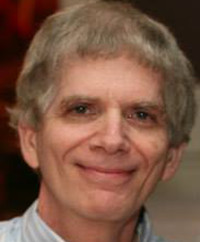 Barry Yedvobnick is a recently retired Biology Professor. He performed molecular biology and genetic research, and taught, at Emory University in Atlanta for 34 years. He is new to fiction writing, and enjoys taking real science a step or two beyond its known boundaries in his
Barry Yedvobnick is a recently retired Biology Professor. He performed molecular biology and genetic research, and taught, at Emory University in Atlanta for 34 years. He is new to fiction writing, and enjoys taking real science a step or two beyond its known boundaries in his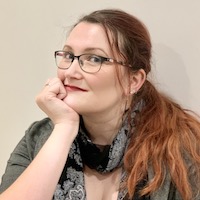 Emma Louise Gill (she/her) is a British-Australian spec fic writer and consumer of vast amounts of coffee. Brought up on a diet of English lit, she rebelled and now spends her time writing explosive space opera and other fantastical things in
Emma Louise Gill (she/her) is a British-Australian spec fic writer and consumer of vast amounts of coffee. Brought up on a diet of English lit, she rebelled and now spends her time writing explosive space opera and other fantastical things in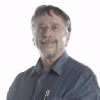 Ed lives with his wife plus a magical assortment of native animals in tropical North Queensland.
Ed lives with his wife plus a magical assortment of native animals in tropical North Queensland. Mark is an astrophysicist and space scientist who worked on the Cassini/Huygens mission to Saturn. Following this he worked in computer consultancy, engineering, and high energy research (with a stint at the JET Fusion Torus).
Mark is an astrophysicist and space scientist who worked on the Cassini/Huygens mission to Saturn. Following this he worked in computer consultancy, engineering, and high energy research (with a stint at the JET Fusion Torus). Sarah Jane Justice is an Adelaide-based fiction writer, poet, musician and spoken word artist.
Sarah Jane Justice is an Adelaide-based fiction writer, poet, musician and spoken word artist.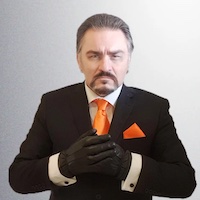 Chuck McKenzie was born in 1970, and still spends much of his time there.
Chuck McKenzie was born in 1970, and still spends much of his time there.